The Samsung Galaxy S22 Ultra is the spiritual successor to the Galaxy Note 20 Ultra - and that's no bad thing.
Should I Buy The Samsung Galaxy S22 Ultra?
Pros
- Incredible S Pen performance
- Buttery-smooth, ultra-bright display
- All-day battery life
- Impressive camera performance
Cons
- Expensive
- Exynos 2200 isn't as powerful as 8 Gen 1
- Slower charging than key rivals
- Can be hard to hold one-handed
Our Verdict
- The Samsung Galaxy S22 Ultra is the perfect upgrade for existing Galaxy Note users, offering the same design language, a built-in S Pen slot and more. Throw in flagship specs including a WQHD+ 120Hz display, one of the best camera setups around and Samsung's Exynos 2200 and you've got a very tempting, but also very premium, smartphone.
Price When Reviewed
- From $1,199
When Samsung revealed the new Galaxy S22 range, it was largely business as usual – for the Galaxy S22 and S22+, anyway. The Galaxy S22 Ultra, on the other hand, offers a much more radical change that brings it closer than ever to the Galaxy Note range, with a redesigned chassis and a built-in S Pen.
The question is, does the spiritual successor to the Galaxy Note 20 Ultra offer enough to tempt users, especially at such a high price point? While it’s not the perfect smartphone, there’s a lot to love about Samsung’s top-end Galaxy S22 Ultra in 2022.
Design & Build
- Galaxy Note design language
- Slick, premium build
- Slightly curved frame is nice in the hand
Compared to Galaxy smartphones before it, some might say the Galaxy S22 Ultra looks a bit simplistic – but I think simplicity looks great on a smartphone. We don’t all need in-your-face designs, refractive glass patterns, or big, bright flashy logos, especially on such a premium bit of kit.
When it comes to the S22 Ultra, less is certainly more, with a slick blend of metal and glass that does most of the talking.
The sharp, squared-off corners are reminiscent of the Galaxy Note 20 Ultra design (I wonder why…) and help make the S22 Ultra stand out from the sea of rounded smartphones, but unlike the flat-sided iPhone 13, it features ever-so-gently curved edges to help it sit comfortably in the palm.
The curved edges of the 6.8in display aren’t anywhere near as extreme as waterfall displays like that of the Motorola Edge a few years ago, with no real problem with accidental screen presses or text disappearing off the edge of the display. It’s just enough to see a bit of curvature on the edge, which also makes for a smooth side-swipe experience.
Otherwise, the Galaxy S22 Ultra looks and feels like a premium bit of kit with a solid feel in the hand. It’s protected by Gorilla Glass Victus+ on the rear to help protect it from damage, and there’s IP68 dust and water resistance.
I've seen a number of other reviews get scratches on the back seemingly too easily, but possibly from having a second phone in their pocket which isn't typical usage. My sample did take a tumble across a tiled floor and survived the incident unscathed.
The Galaxy S22 Ultra is available in a range of colours including Phantom Black, Phantom White, Green and Burgundy.
Display
- Stunning 6.8in AMOLED display
- Buttery-smooth 120Hz adaptive refresh rate
- Impressive brightness
The 6.8in AMOLED display of the S22 Ultra is undoubtedly one of the highlights of the smartphone and a key reason to buy it over other phones. It offers a bright, vivid, detailed experience with a smooth refresh rate.
The display sports a 3088 x 1440 (WQHD+) resolution that equates to a pixel density of around 500ppi – a stark contrast to Apple’s top-end iPhone and its 2316 x 1080 (FHD+) display.
One saving factor is the adaptive refresh rate, which not only makes apps and games look and feel smooth, but the ability to shift from 1- to 120Hz means it’ll draw less battery power than a standard 120Hz display without any real noticeable difference in performance.
The S22 Ultra is easy to use outside, even in direct sunlight, with one of the brightest smartphone displays on the market right now. Samsung claims at standard levels it can reach up to 1250nits, while a boosted brightness mode (ideal for outdoor use) cranks it up to an even higher 1750 nits.
Even if it didn’t hit quite such lofty heights in benchmarking, scoring 711 nits via a Spyder X, it’s comfortably brighter than most other flagships right now. That’s thanks in part to Samsung’s Vision Booster tech that’ll automatically adjust the brightness, colours and more depending on ambient lighting conditions for an optimal viewing experience.
Hidden beneath the display is an ultrasonic fingerprint reader, and while they’ve had a bad rap in the past, I found it to work near-perfectly on the S22 Ultra. It’s located roughly a third of the way up from the bottom edge, which is where my thumb naturally lands, and the unlock process is near-instantaneous.
There’s also a small 40Mp holepunch camera, centrally placed at the top of the display, but the large dimensions of the display meant it was barely noticeable in general use.
S Pen
- Incredible low-latency performance
- Stored within the smartphone when not in use
- Pressure and tilt sensitive
While last year’s Galaxy S21 Ultra offered compatibility with the S Pen stylus, the S22 Ultra goes full-Note by adding support for an integrated S Pen, thus completing its transition to Note-but-not-Note. If you love the experience on offer from the Note 20, the Galaxy S22 Ultra is its successor in all but name.
While it’s personally a little small for this reviewers’ hands, the stylus is a joy to use – and that’s mainly down to Samsung’s latency magic, reduced from 9ms to an incredible 2.8ms on the S22 Ultra.
That translates to near-instant response when writing text, providing more of a natural pen-to-paper feeling when jotting notes on the go and doodling using PenUP – especially when combined with Samsung’s scribbling sound effects.
Aside from being handy for notetaking and drawing, the S Pen enables extra functionality, including the ability to make smart selections of anything on screen, annotate screenshots, doodle in AR and the ability to translate handwritten text to plaintext.
The button on the side of the stylus even doubles up as a remote trigger, allowing you to trigger photos and videos without being behind the camera.
Not everyone will make full use of the extra functionality on offer from the integrated S-Pen, but the ability to use a high-quality stylus whenever you like is something that’ll appeal to a lot of users – especially with an experience as true-to-life as the S Pen. It’s easily my favourite feature of the S22 Ultra, and the feature I’ll miss most once I move back to my regular smartphone.
- One of the best rear camera setups around
- Big improvements to the 100x space zoom
- Great low-light performance
Many regarded the Galaxy S21 Ultra’s camera setup as the best in the market in 2021, and it seems Samsung agreed – because the sensors on the rear of the phone are almost identical to its predecessor.
Here's a collection of shots taken on the S22 Ultra during testing:
It’s still not quite as clear as daytime shots, but it’s certainly impressive to see how much it can pick up in dark conditions.
There’s also improved optical image stabilisation (OIS) and a better image signal processor (ISP), but the results of these changes are harder to notice in day-to-day use. Instead, most of the camera improvements seem to be software-based and that’s not a bad thing considering the hardware is still top-of-the-line in most regards.
For one, the S22 Ultra has vastly improved the Super Steady System used with the 100x space zoom, which helps keep those extreme close-ups from wobbling as you take snaps.
There are also improvements to Samsung’s pixel-binning tech on the main 108Mp lens, dubbed Adaptive Pixel by Samsung. The idea is simple; it takes a nona-binned image (combining 9 pixels into 1 for better image light, contrast and detail) and combines that with a full 108Mp image with great results.
There’s plenty of detail, contrast and dynamic range are nailed, and colours look vibrant, if not a little too saturated at times. Crucially, you can enjoy highly detailed photography without having to store full-res 108Mp images.
Video capture is just as impressive at up to 8K@24fps with impressive optically-stabilised video capture, no noticeable artifacting and great audio quality too. It has attempted to take on Apple’s Cinematic Video mode with Portrait Video, but it’s not quite as advanced as what’s on offer from flagship iPhones, only able to apply the faux-bokeh to videos with faces clearly visible.
Still, with perks like the ability to switch between lenses on the fly and the ability to pause – not end – a video recording are very handy options not available on Apple’s flagship, so it’ll largely depend on your video uses.
Specs & Performance
- Exynos 2200 lags behind Snapdragon 8 Gen 1 in benchmarks
- Not noticeable in use, feels snappy in the hand
- Occasional freeze/restart
Like its predecessors, the chipset found within the Samsung Galaxy S22 Ultra depends on where you are in the world. If you’re in the UK or Australia, you’ll find Samsung’s own 4nm Exynos 2200 chipset inside, while those in the US and most other territories are treated to Qualcomm’s 4nm Snapdragon 8 Gen 1.
That’s paired with either 8GB or 12GB of LPDDR5 RAM and 128GB/256GB/512GB/1TB of super-fast UFS 3.1 storage. For what it’s worth, I was supplied with a 12/256GB variant for review.
However, Exynos 2200 graphics performance at WQHD+ trails slightly behind 8 Gen 1 phones, and it’s only when the S22 Ultra drops down to FHD+ that it beats the QHD+ performance of the likes of the Oppo Find X5 Pro and Xiaomi 12 Pro in tests - as you would expect.
It also can’t quite compete with Apple’s iPhone 13 Pro Max and its A15 Bionic in the CPU department, but Apple’s lead in that regard is unsurprising at this point.
Of course, benchmark numbers only tell half the story, and it should come as no surprise that performance is generally rapid, with the Galaxy S22 Ultra able to handle just about anything I could throw at it.
Apps tend to load instantly, there’s very little stutter (aside from Twitter, which I assume is a bug in the app) and games run well, even in titles like Call of Duty Mobile with high-end textures and VFX enabled. It feels responsive to the touch thanks to the adaptive refresh rate, with buttery-smooth animations adding to the overall high-end performance on offer.
There are bugs that need to be ironed out, with the phone completely freezing and restarting twice in my week-long test, but I’m confident that Samsung will get on top of these issues quickly.
Battery Life & Charging
- All-day battery life
- Could squeeze 1.5 or even 2 days with screen adjustments
- Faster charging, but not as fast as rivals
The Samsung Galaxy S21 Ultra packs the same 5000mAh battery as its predecessor, so it should come as no surprise that battery life is comparable with last year’s S21 Ultra in testing.
Overall battery life depends on factors including refresh rate and resolution, with the S22 Ultra able to last all day with the combination of an adaptive refresh rate and WQHD+ resolution with average use, but it won’t quite span a full second day. That can be extended to around 1.5 days if you drop down to FHD+ though - something that won’t be noticeable to most users anyway.
In testing, the S22 Ultra managed to last 10 hours and 30 minutes in our benchmark test at full WQHD+ resolution, and dropping down to FHD+ provided an extra two hours of battery life, coming in at 12hrs 30 minutes.
If you do get your hands on one, expect to see around 66% in half an hour and a full charge in around an hour. That’s not at the same level as the Black Shark 4 Pro’s 120W fast charging tech, but it’ll suffice for the majority of users.
It’s a similar story with wireless charging, with the 15W lagging behind the super-fast wireless charging on offer from key rivals – but at least the low power requirements mean you’ll be able to use most third-party Qi chargers.
Software & Apps
- Ships with the latest Android 12 with Samsung OneUI 4.3
- Advanced features – especially photo-editing tools – baked in
- Samsung committed to up to four years of OS updates
The Samsung Galaxy S22 Ultra comes running the latest Android 12 out of the box with Samsung’s OneUI 4.3 applied on top.
It’s not the most dramatic change to the Android OS compared to skins like Xiaomi’s MIUI and Oppo’s ColorOS, but there are nuances to the design and functionality that can take a little bit of getting used to – especially as Samsung decided to ship its own versions of the Messages app and Calendar app alongside pre-installed Google variants.
There’s also the added perk of DeX support, which provides a desktop PC experience when plugged into a monitor.
Crucially, Samsung has committed to 'up to four generations' of Android OS updates, not just security updates, which could potentially see the Galaxy S22 Ultra supported all the way through Android 16 – something refreshingly different to most Android manufacturers. Even Google only commits to three years of OS updates for its Pixel range!
Price & Availability
The Galaxy S22 Ultra is among the most premium smartphones on the market, starting at £1,149/$1,199 for the 8GB/128GB variant, although that does represent a $100 drop compared to its predecessor.
You can get an upgraded 256GB of storage and 12GB of RAM for an additional $100/$100, with additional 512GB and 1TB models available for those that need even more storage.
Here’s how much the Samsung Galaxy S22 Ultra will set you back in all its configurations:
- 8GB + 128GB: $1,199/£1,149/€1,279
- 12GB + 256GB: $1,299/£1,249/€1,379/₹109,999
- 12GB + 512GB: $1,399/£1,329/€1,489/₹118,999
- 12GB + 1TB: $1,599/£1,499/€1,689
Those interested in buying the premium smartphone outright can do so from the likes of Samsung and Amazon in the UK and US, while those interested in a contract can head to carriers including EE and O2 in the UK and Verizon in the US.
Verdict
There’s a lot to love about the Samsung Galaxy S22 Ultra; it looks premium, the WQHD+ AMOLED display is top-notch, the cameras are among the best around right now and, for the first time, the Ultra model has a built-in S Pen – just like the Note line.
This, coupled with the fact that the design mirrors the Note 20 Ultra more than the rest of the S22 range, means that the Galaxy S22 Ultra is a Galaxy Note in all but branding – and that’s no bad thing. The S Pen performance is incredible, offering lower latency than the Apple Pencil for an unmatched writing and drawing experience.
Despite Samsung’s work with AMD on the GPU of its new Exynos 2200 chipset, it lags behind near-identical Snapdragon 8 Gen 1 smartphones in benchmarks. That said, it’s not that noticeable in everyday use, offering a largely buttery-smooth experience when Instagramming and gaming.
It’s not the perfect smartphone – the charging speeds are much slower than rivals, the large dimensions will put some off and it’s very expensive – but the Galaxy S22 Ultra will tick a lot of boxes for a lot of people.
Specs
- 6.8in, 120Hz, WQHD+, AMOLED display
- Snapdragon 8 Gen 1 or Exynos 2200
- 8/12GB RAM
- 128/256/512GB/1TB storage
- 5000mAh battery
- 45W wired charging
- 15W wireless charging
- Rear camera: 108Mp, f/1.8, OIS main camera, 12MP, f/2.2 ultra-wide camera, 10Mp, f/2.4, OIS 3x zoom telephoto camera, 10Mp, f/4.9, OIS 10x zoom telephoto camera
- 40Mp, f/2.2 front camera
- 5G
- Wi-Fi 6E
- Bluetooth 5.2
- UWB
- IP68
- Gorilla Glass Victus+
- 77.9 x 163.3 x 8.9mm
- 229g
- Android 12 with One UI 4.1

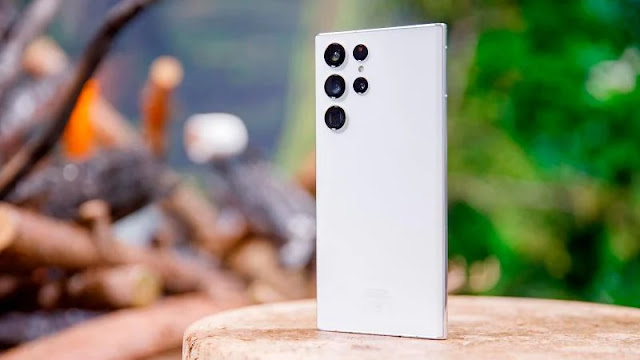
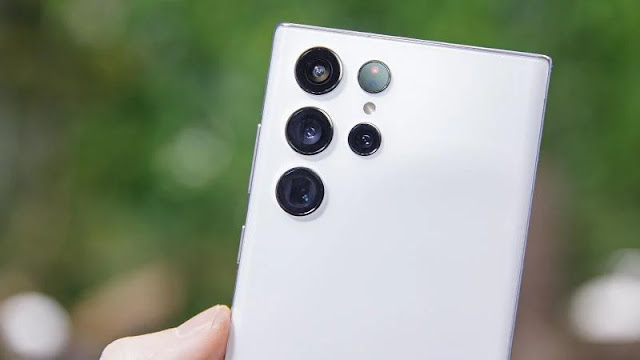
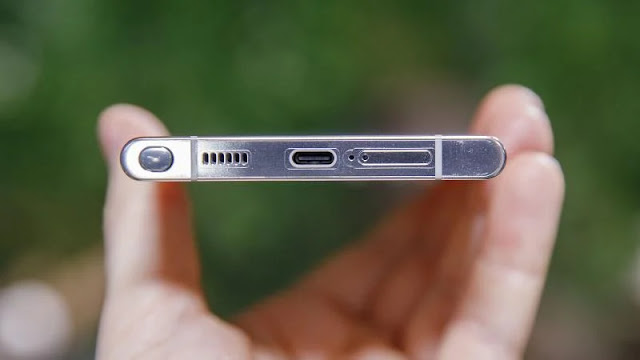
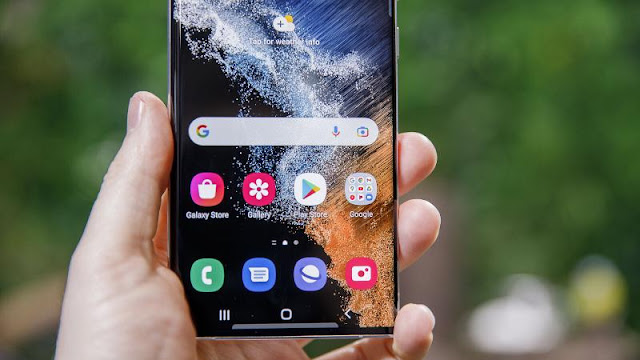




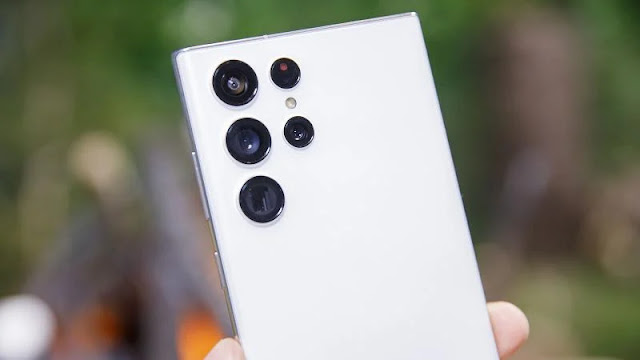











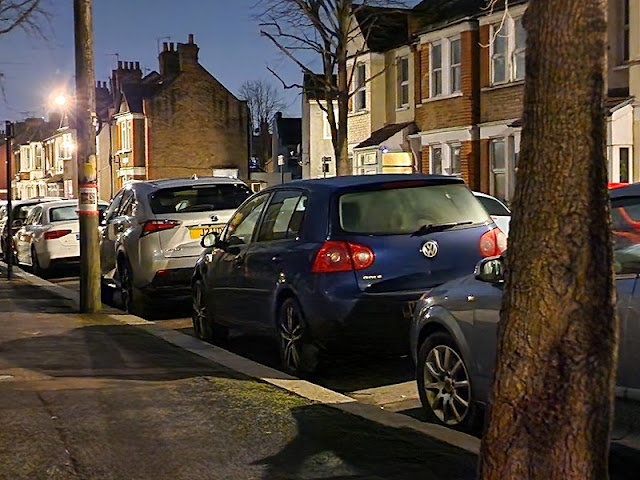









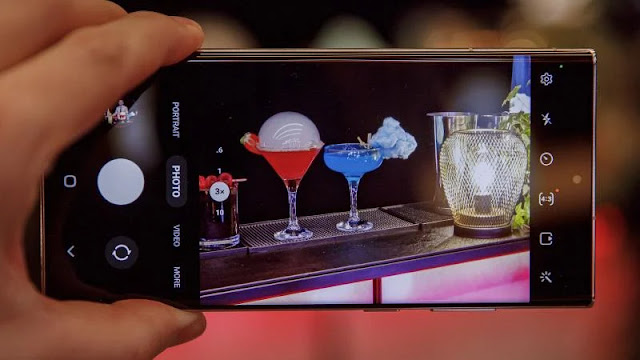

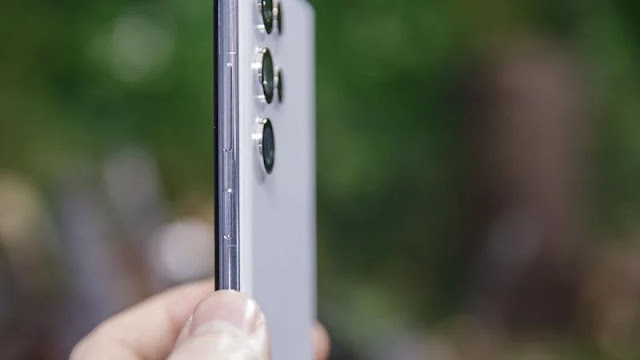





0 comments:
Post a Comment